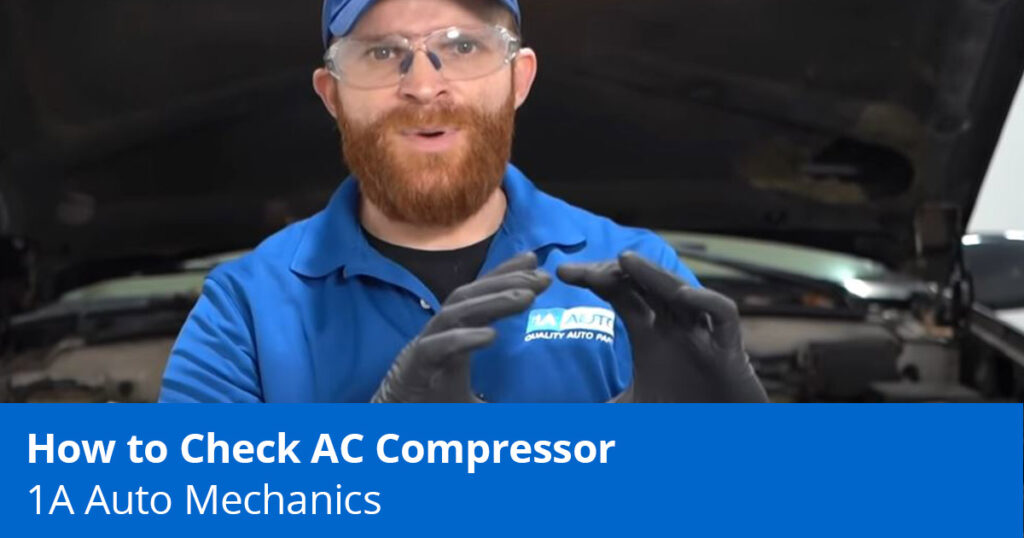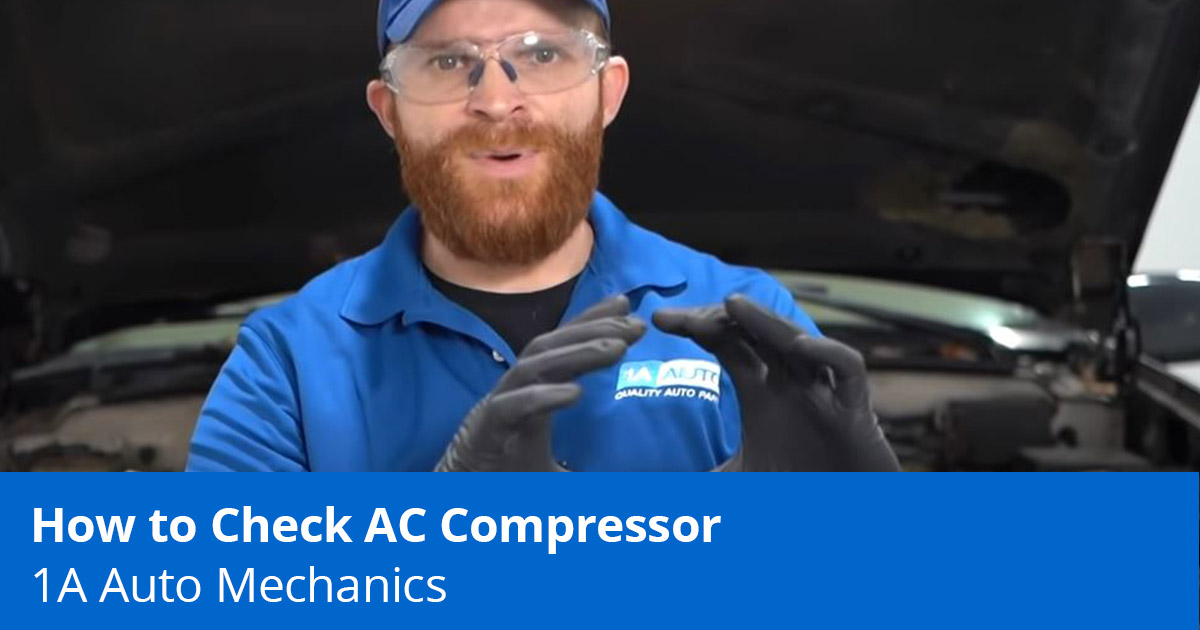
When your car has a problem, one of the many ways it can communicate it is by a distinctive noise. It’s often your job to figure out what’s causing the noise and where it’s coming from. For example, if your car has a grinding noise that is coming from under the hood, the source could be a bad AC compressor.
Diagnosing your AC Compressor is often an easy job that you can do yourself. It only requires a long pry bar or stethoscope. In this post, we’ll show you how to check your AC compressor and provide important tips about servicing and repairing AC components.

Steps for Troubleshooting a Bad AC Compressor
The AC system in your car is designed to function unobtrusively and quietly without making any grinding noises. In most cars, it comes connected to other parts of the engine by a serpentine belt. This helps to turn the pulley on the AC compressor to create pressure in the refrigerant lines.
Here’s how to diagnose any grinding noise that’s coming from your AC system.
Steps for Troubleshooting If Your Car Has a Bad AC Compressor
Inspect Pulleys and Belt Routing System
Inspect the pulleys and the serpentine belt to see if any objects are caught up in the system that may be causing the noise. You want to do this while the engine is off. Check to see if there are sticks, debris, or rocks. If you find any foreign objects, remove them and clean the surrounding parts.

Listen for Grinding Noises from Bad AC Compressor
Once a visual inspection of the pulleys is done, it’s time to confirm the source of the abnormal noise. You’ll need a stethoscope or a long pry bar. The latter should be long enough to ensure you’re not too close to any moving engine parts.
Start by switching on the engine and turning on the AC. Go ahead and place the pry bar on the rotating pulleys and put your ear against it from the other end. You should be able to hear the grinding noise through the pry bar. Once you locate the problematic part, switch off the engine and move to step 3.
Check for Wear and Tear
You’ll need to give the serpentine belt and pulley system a little more attention. But before you start, take note of the belt’s routing system. You can draw it on a piece of paper or take a picture of it. Once done, take the serpentine belt off and take a good look at it.
Check for any discoloration, shininess, breakage, or wear and tear. A bad belt should be replaced immediately to prevent it from failing completely. You’ll also need to rotate the pulleys manually with your hand while giving them a nice wiggle.
You want to listen to any irregular sounds that mimic the grinding noise you heard under the hood. Your AC compressor should be the culprit in this place. Most have a compressor clutch that wears out quickly, causing rattling noises when operating.
Replacing the Bad AC Compressor
It’s not very hard to replace the AC compressor, but there are a few important things to note when servicing or repairing that make it common to have a professional mechanic handle this repair.
1. Remove and Replace Refrigerant with a Refrigerant Recovery Machine
You’ll need to be careful of the pressurized refrigerant that is found within the system. If you aimlessly pull any of the pressure lines, the refrigerant could come out and go into your nose, eyes, or lungs. It’s also important to know that it’s illegal to evacuate your AC system into the atmosphere. The gas that’s normally released is harmful to the environment and contributes to global warming.
You’ll need to have a refrigerant recovery machine that can remove the gas from the system and replace it once the servicing is done. This is not something you’d typically have stored in your garage or house, so you may need to take your car to a service station to have repairs done.
2. Inspect for Additional Broken Parts
The second thing to note is the price difference when it comes to servicing or repairing your AC system. If you do your research, you’ll find out that some service stations charge more than others. This is often based on the number of parts that need to be replaced.
If there’s a grinding noise coming from your AC compressor, it could be accompanied by some debris and contaminants that may be floating inside the AC system. The debris could also be clogging the orifice tube, filters, and any passages where the refrigerant passes through.
These will need to be replaced to prevent a new system from overheating due to excess pressure. It’s therefore not uncommon to find yourself spending a little more to replace the parts affected.
3. Check the AC Receiver Dryer and Lines for Contamination
The AC receiver dryer should ideally be replaced after every three to five years. This depends on the type of vehicle you own. However, if you have a grinding noise coming from the AC compressor, you may have to replace it sooner due to contamination by debris and contaminants.
A contaminated dryer can cause a major issue with the AC system, leading to expensive repairs. The same can happen if the drying agent inside is unable to accumulate condensation the right way. Other parts that you may want to check for contamination include all the lines that connect to the AC system.
You can use a special flushing tool to clean out the ac lines and rid them of any foreign particles. An alternative option would be to completely remove the AC system and run your car without it. This is viable in older vehicles where the owner doesn’t need the AC.
Content Related to Bad AC Compressor
- AC Blows Cold on One Side and Hot on the Other?
- Car AC Fan Making Noise?
- A/C Not Working? Here’s How to Diagnose It
Shop Heating and Cooling Parts


I have a 2016 Honda CRV. The a/c doesn’t always work. Sometimes it just blows warm or hot air. No noise under hood.